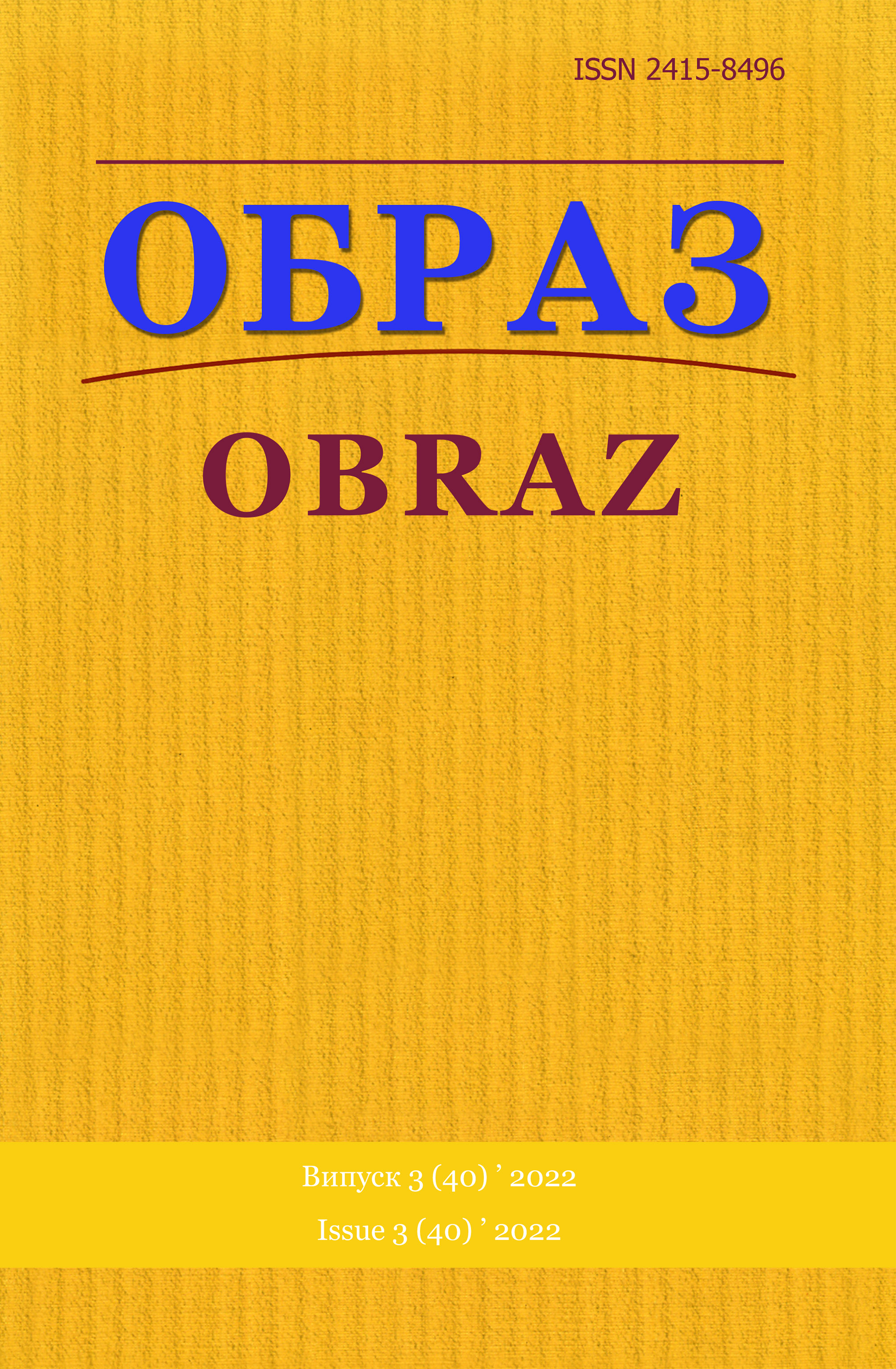Abstract
Introduction. Since February 24, the day of the full-scale invasion, Telegram channels have become extremely popular in Ukraine. At the same time, Russian propagandists continued to use this social network to spread disinformation and sow panic.
Relevance and purpose. Nowadays, it is very important to monitor the quality of the content distributed in Telegram, in particular, compliance with the reliability standard – the presence of clear references to verified sources. The purpose of the study is to develop a semi-automated method of analyzing the posts of the most popular regional Telegram channels to identify unreliable links and rumors. On the material of one of the most popular regional telegram channels of Odesa, «Odessa Info», the application of the algorithm for detecting unreliable news sources and rumors was demonstrated.
Methodology. To obtain the results, the method of analyzing the posts of Telegram channels for compliance with journalistic standards was used. The research combined automated data processing (searching for violations of the standard by keywords) and manual (analyzing the found posts by the researcher).
Results. As a result, it was found that for July-September 2022, keywords indicating the use of information from readers, unreliable links and rumors were contained in 11.3% of posts. The majority of messages that contained the keywords (42.6%) are not checked by the Telegram channel in any way. Only in 11.9% it was professional journalistic work – that is, a clear reference either to an official source (operational command, police, president), or to a quality mass media, an expert, etc.
Conclusions. Thus, in the vast majority of cases, the information provided by the Telegram channel is of poor quality. Content coming from readers, or rumors and speculation, in the vast majority of cases is either not verified, or is verified in violation of the methods of professional journalism.
References
1. «Eight of the ten most popular Telegram channels in Ukraine are anonymous», IMI, available at: https://imi.org.ua/news/visim-iz-desyaty-najpopulyarnishyh-telegram-kanaliv-v-ukrayini-yeanonimnymy-doslidzhennya-imi-i41295 (accessed 3 October 2022).
2. Hurzhij, S.V. (2021), «Modern threatening trends in the use of Telegram channels to the detriment of state interests», Informaciya i pravo [Information and law], no. 4, pp. 162–169.
3. Zhuhai, V., Kuznietsova, T. (2021), «Features of Telegram channels as the most modern media tools: ukrainian context», Vcheni zapysky Tavrijskoho nacionalnoho universytetu imeni V. I. Vernadskoho. Seriya: Filolohiya. Zhurnalistyka [Scholarly notes of V. I. Vernadsky Tavri National University. Series: Philology. Journalism], no. 3, pp. 120–125.
4. Ilyuk, K., Sapolovych, Ye., Ryaboshtan, I. (2022), «Now we will live to the fullest!». How and why Russia has created a Telegram channels network for the occupied territories of Ukraine», Detector Media, available at: https://detector.media/monitorynh-internetu/article/198960/2022-05-05-teperzazhyvem-yak-i-dlya-chogo-rosiya-stvoryla-merezhu-telegram-kanaliv-dlya-okupovanykh-neyuterytoriy/ (accessed 3 October 2022).
5. «Catalog of Telegram channels and chats. News and media», available at: https://uk.tgstat. com/news (accessed 3 October 2022).
6. Korenkov, О. (2019), «Telegram as a new media platform for the “Islamic State” propaganda», Visnyk of the Lviv University Philosophical Political studies [Bulletin of Lviv University. Series: Philosophical and political studies], vol. 26, pp. 120–131.
7. «Media consumption in Ukraine: changing media needs and the loss of Russian propaganda», available at: https://detector.media/infospace/article/196442/2022-02-15-mediaspozhyvannya-vukraini-zmina-mediapotreb-ta-progrash-rosiyskoi-propagandy/ (accessed 3 October 2022).
8. «Methodology for assessing the quality of content in regional printed and online publications», available at: https://idpo.org.ua/wp-content/uploads/2021/methodology-2021.pdf (accessed 3 October 2022).
9. «Internet monitoring», available at: https://detector.media/category/monitorynh-internetu/ (accessed 3 October 2022).
10. «Monitoring of regional mass media, social networks of Odesa region, individual mass media of the Russian Federation to detect information operations, disinformation, hidden attempts to manipulate public opinion», available at: http://cvu.od.ua/db_pic/images/files/file_1657126497.0931. pdf (accessed 3 October 2022).
11. Steblyna, N. (2022), ««Odessa will be bombed, but it is not accurate»: how often do telegram channels verify information during the war», available at: https://izbirkom.org.ua/publications/ medialiteracy/2022/odesu-bombitimut-ale-ce-netochno-yak-chasto-regionalni-telegram-kanalipereviryayut-informaciyu-pid-chas-vijni/ (accessed 3 October 2022).
12. Steblyna, N. (2021), «Opposition political actors representation in Ukrainian digital forum (on the material of the most popular telegram channels)», Visnyk of the Lviv University Philosophical Political studies [Bulletin of Lviv University. Series: Philosophical and political studies], vol. 39, pp. 150–156.
13. Tonkikh, I. (2021), «Functioning Peculiarities of Public Telegram-Channels as CrossMedia Platform», State and regions. Series: Social communications [State and regions. Series: Social communications], no. 4 (48), pp. 47–54.
14. Cherniavska, L.V., Danyliuk, N.O. (2021), «Telegram as the instrument of digitalization of ukrainian masmedia», Vcheni zapysky Tavrijskoho nacionalnoho universytetu imeni V. I. Vernadskoho. Seriya: Filolohiya. Zhurnalistyka [Scholarly notes of V. I. Vernadsky Tavri National University. Series: Philology. Journalism], no. 6(3), pp. 192–198.
15. Gaiduk, N. (2020), «Features of the representations of Ukrainian identity in the visual content of popular telegram channels», Bulletin of the Mariupol State University. Series: Philosophy, cultural studies, sociology [Bulletin of the Mariupol State University. Series: Philosophy, cultural studies, sociology], vol. 19, pp. 37–48.
16. «Infocrime campaign to detect fake news starts in four regions in Ukraine», IMI, available at: https:// imi.org.ua/en/monitorings/infocrime-campaign-to-detect-fake-news-starts-in-four-regions-inukraine-i35157 (accessed 3 October 2022 ).
17. Plakhta, D. (2020), «Telegram as a tool for political influence and manipulation», Tele- ta radiozhurnalistyka [TV and radio journalism], no. 19, рр. 88–94.

This work is licensed under a Creative Commons Attribution 4.0 International License.

